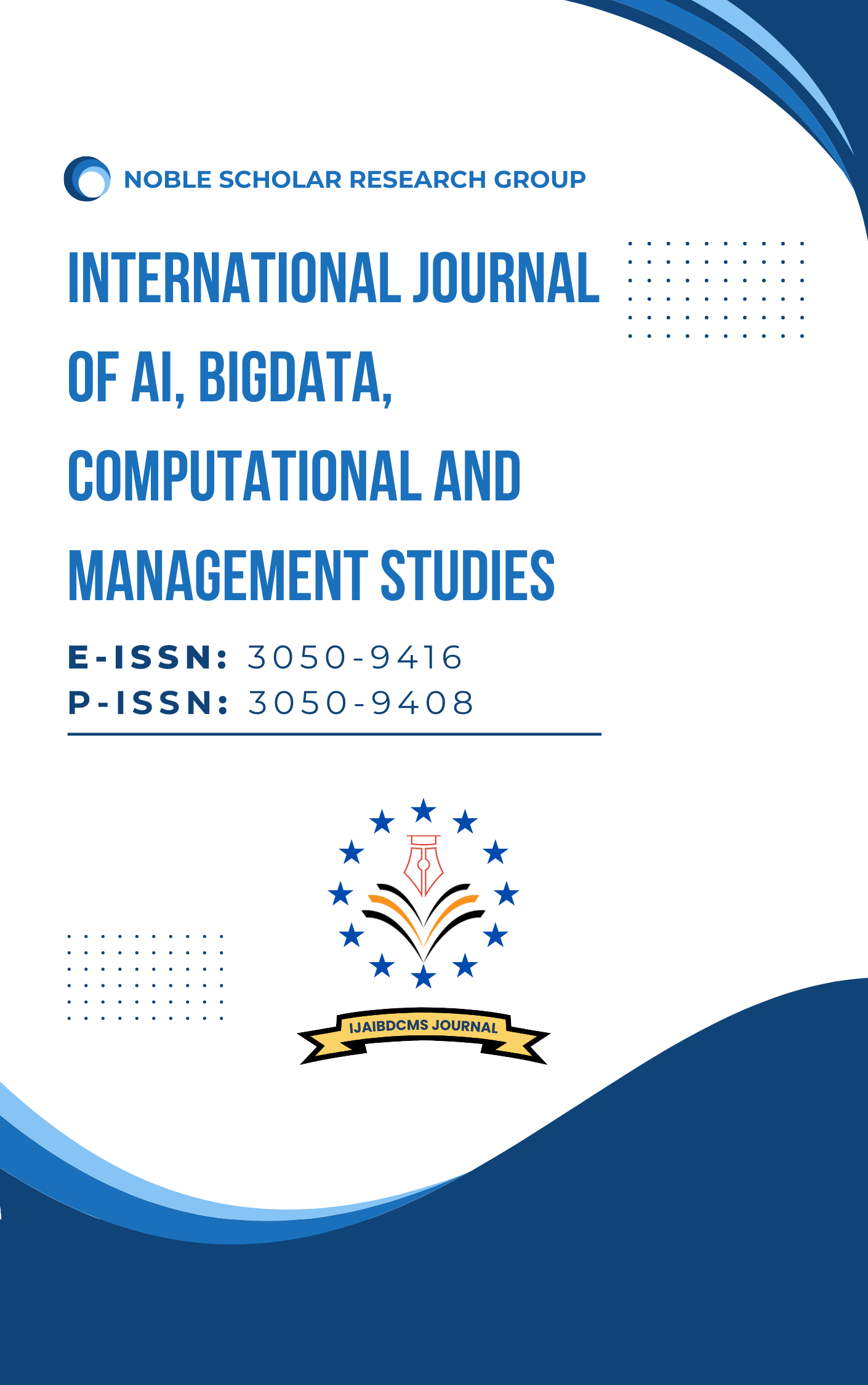Predicting Opioid Treatment Program Dropout with Machine Learning on Behavioral Health EMR’s
DOI:
https://doi.org/10.63282/3050-9416.IJAIBDCMS-V6I4P103Keywords:
Opioid Treatment Programs, Behavioral Health Electronic Medical Records, Machine Learning, Predictive ModelingAbstract
The opioid crisis continues to threaten global health, with addiction, relapses, and overdose deaths at record highs. The effectiveness of OTPs, which include buprenorphine treatment and methadone treatment, is compromised because the dropout rate of OTPs is abysmal, with a range of 60-85 percent. This study was primarily designed to predict outcomes in the Opioid Treatment Program (OTP), such as dropout from treatment, using Behavioral Health EMR data and machine learning strategies. We amalgamate data from diverse OTP projects across the nation to foster insights into unique opioid use disorders. The study achieves an ROC-AUC of 0.82 and demonstrates that machine learning algorithms deliver superior classification accuracy compared to classic statistical techniques, as the survey ultimately met the expectations of all involved. Costa C, who discusses collected features, notes that there exist many methods to compare, which enable us to create ensembled predictors. Necessary advice was provided for the utilization of various Machine Learning algorithms, including Neural Networks, Logistic Regression, Random Forests, and Gradient Boosting. Prior comprehensive methods were flawed and busy with the increasing problem of missing appointments for evaluations. In addition to these, any other models can predict a poor prognosis, allowing for the identification of factors associated with this in the database at the initial stage
References
[1] Adekkanattu, P., Furmanchuk, A. O., Wu, Y., Pathak, A., Patra, B. G., Bost, S., ... & Pathak, J. (2024). Deep learning for identifying personal and family history of suicidal thoughts and behaviors from EHRs. NPJ digital medicine, 7(1), 260.
[2] Cao, W. (2022). Risk Prediction for Opioid Use Disorder (OUD) Using Electronic Health Records. University of Rhode Island.
[3] Dhaubhadel, S., Ganguly, K., Ribeiro, R. M., Cohn, J. D., Hyman, J. M., Hengartner, N. W., ... & McMahon, B. H. (2024). High dimensional predictions of suicide risk in 4.2 million US Veterans using ensemble transfer learning. Scientific reports, 14(1), 1793.
[4] Endla, P., & Patel, R. (2025, March). Robust Methodology Design to Predict Opioid Overdose System based on AI Assisted Deep Learning Principles. In 2025 5th International Conference on Expert Clouds and Applications (ICOECA) (pp. 796-803). IEEE.
[5] Flores, M. (2023). Retention Rates in Medication for Opioid Treatment: The Effects of Social Determinants of Health (Doctoral dissertation, George Fox University).
[6] Gottlieb, A., Yatsco, A., Bakos-Block, C., Langabeer, J. R., & Champagne-Langabeer, T. (2022, January). Machine learning for predicting risk of early dropout in a recovery program for opioid use disorder. In Healthcare (Vol. 10, No. 2, p. 223). MDPI.
[7] Lopez, I., Fouladvand, S., Kollins, S., Chen, C. Y. A., Bertz, J., Hernandez-Boussard, T., ... & Chen, J. H. (2024, January). Predicting premature discontinuation of medication for opioid use disorder from electronic medical records. In AMIA Annual Symposium Proceedings (Vol. 2023, p. 1067).
[8] Miranda, O., Fan, P., Qi, X., Wang, H., Brannock, M. D., Kosten, T. R., ... & Wang, L. (2024). DeepBiomarker2: Prediction of alcohol and substance use disorder risk in post-traumatic stress disorder patients using electronic medical records and multiple social determinants of health. Journal of Personalized Medicine, 14(1), 94.
[9] Miranda, O., Fan, P., Qi, X., Wang, H., Brannock, M. D., Kosten, T., ... & Wang, L. (2024). Prediction of adverse events risk in patients with comorbid post-traumatic stress disorder and alcohol use disorder using electronic medical records by deep learning models. Drug and alcohol dependence, 255, 111066.
[10] Miranda, O., Qi, X., Brannock, M. D., Whitworth, R., Kosten, T. R., Ryan, N. D., ... & Wang, L. (2024). Integrating Drug Target Information in Deep Learning Models to Predict the Risk of Adverse Events in Patients with Comorbid Post-Traumatic Stress Disorder and Alcohol Use Disorder. Biomedicines, 12(12), 2772.
[11] Nateghi Haredasht, F., Lopez, I., Tate, S., Ashtari, P., Chan, M. M., Kulkarni, D., ... & Chen, J. H. (2025). Predicting treatment retention in medication for opioid use disorder: a machine learning approach using NLP and LLM-derived clinical features. Journal of the American Medical Informatics Association, ocaf157.
[12] Park, S. J., Lee, S. J., Kim, H., Kim, J. K., Chun, J. W., Lee, S. J., ... & Choi, I. Y. (2021). Machine learning prediction of dropping out of outpatients with alcohol use disorders. PLoS One, 16(8), e0255626.
[13] Rabinowitz, J. A., Wells, J. L., Kahn, G., Ellis, J. D., Strickland, J. C., Hochheimer, M., & Huhn, A. S. (2025). Predictors of treatment attrition among individuals in substance use disorder treatment: A machine learning approach. Addictive behaviors, 163, 108265.
[14] Tahsin, F., Morin, K. A., Vojtesek, F., & Marsh, D. C. (2022). Measuring treatment attrition at various stages of engagement in Opioid Agonist Treatment in Ontario Canada using a cascade of care framework. BMC Health Services Research, 22(1), 490.
[15] Ünlü, A., Hakkarainen, P., Karjalainen, K., Tammi, T., & Subasi, A. (2025). Identifying Risk Factors of Substance Use in Finland: A Machine Learning Approach. Substance Use & Misuse, 1-59.



